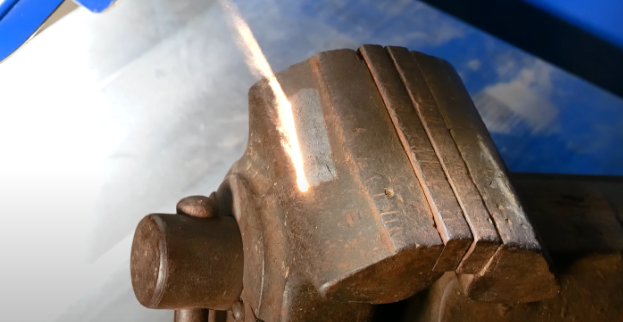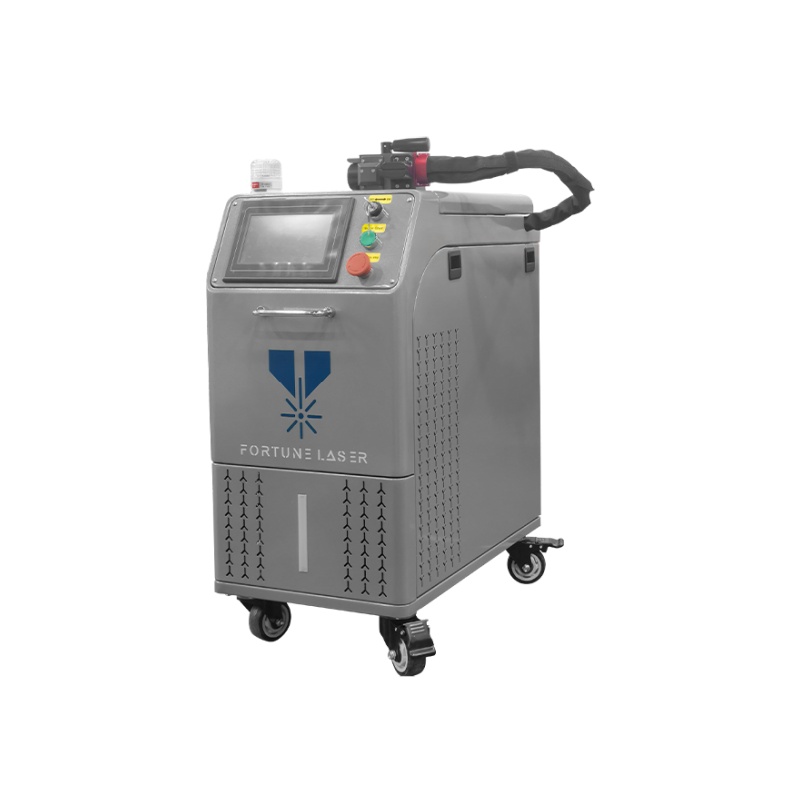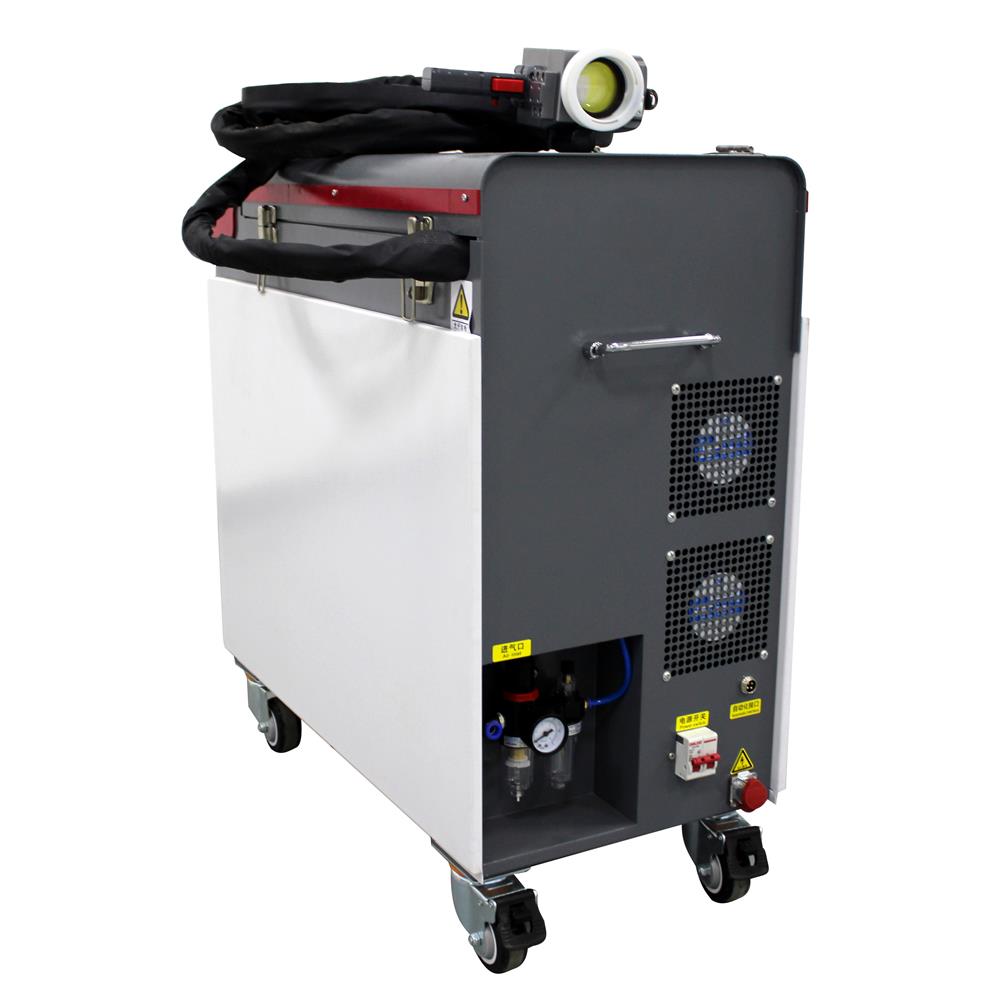Laser cleaning for motorcycle restoration is a modern, precise way to prepare surfaces. It avoids the damage and problems caused by older methods like sandblasting or chemical dipping. This guide explains the technology, compares it to other methods, and shows you how to get started. It will help your shop improve quality, increase safety, and lower costs.
Why Laser Cleaning is Better for Your Shop
For a professional shop, new technology needs to deliver real results. Laser cleaning offers major benefits in how you work, the quality you deliver, and the safety of your team.
-
No More Hidden Sand or Grit: Sandblasting leaves behind tiny particles of sand or beads. If this grit gets trapped inside an engine, transmission, or frame, it can cause the parts to fail completely. Laser cleaning uses only light, so there is zero risk of this happening.
-
Keeps Original Parts Perfect: The laser works by turning rust and paint into vapor without harming the metal underneath. This protects important details like factory markings and serial numbers, which are often erased by harsh blasting or chemicals.
-
Get More Work Done Faster: With laser cleaning, there is no sand to load, no big mess to clean up, and no chemical waste to get rid of. This means you can move from cleaning to the next step—like welding or painting—much faster, helping you finish projects sooner.
-
A Safer Workplace: Sandblasting creates harmful dust that can cause lung disease. Chemical dipping uses dangerous acids. Laser cleaning avoids these risks. It turns contaminants into a vapor that a fume extractor safely captures, creating a healthier environment for your workers.
Guide to Cleaning Different Motorcycle Parts
Laser cleaning works differently on various metals. Using the right settings is key to getting the best results.
Steel Parts (Frames, Swingarms, Tanks)
On steel parts, the laser easily removes thick rust and old paint, even from tricky spots around welds. It leaves a perfectly clean surface that is ready for welding or a new coat of paint. Best of all, no sand gets stuck inside the frame tubes. A pulsed laser is best to avoid warping thin metal, like on a gas tank.
Aluminum Parts (Engine Blocks, Casings, Wheels)
Aluminum is a soft metal that sandblasting can easily damage. Laser cleaning is the perfect choice for a motorcycle engine cleaning project because it safely removes tarnish and baked-on grime without leaving pits or marks. For aluminum, you must use a pulsed laser to avoid heat damage. Keep in mind, the laser cleans to the bare metal, which can look dull. You may need to polish the part afterward for a shiny, show-quality finish.
Chrome-Plated Parts (Exhausts, Trim)
Laser cleaning can do two things for chrome. With low power, it can gently remove surface rust without hurting the shiny chrome finish. With higher power, it can strip off old, damaged chrome so the part can be re-plated.
Important Safety Rule: When stripping chrome, the laser creates toxic fumes (hexavalent chromium). You must use a certified fume extractor and a proper respirator to keep the operator safe.
Head-to-Head: Laser vs. Sandblasting vs. Chemicals
When you compare laser cleaning vs sandblasting or chemical dipping, the best choice depends on your needs for precision, safety, and cost. For high-value restoration, laser cleaning is the clear winner.
| Feature | Laser Cleaning | Sandblasting | Chemical Dipping |
| Precision | Excellent (Pinpoint accurate) | Poor (Aggressive and messy) | Poor (Cleans everything) |
| Damage to Part | None (No contact) | High (Can pit, warp, or erode metal) | Medium (Can etch metal) |
| Risk of Leftover Grit | Zero | High (Can destroy engines) | None (Chemicals can get trapped) |
| Environmental Impact | Excellent (Almost no waste) | Poor (Creates hazardous dust) | Poor (Creates hazardous liquid waste) |
The Technology: Pulsed vs. CW Lasers (What You Must Know)
Understanding the two main types of lasers is the most important part of making a smart choice.
-
Pulsed Lasers (The Right Tool): These lasers use short, powerful bursts of light. This is like a “cold cleaning” process that zaps away contaminants without heating up the part. This prevents warping and damage, making a pulsed laser cleaner the correct tool for restoring valuable parts.
-
Continuous Wave (CW) Lasers (The Budget Trap): These lasers use a constant, hot beam of light. They basically burn off contaminants. This process creates a lot of heat that can easily warp a motorcycle frame, gas tank, or aluminum engine case. CW lasers are cheaper, but they are the wrong choice for most restoration work.
How to Get Started: Hire a Service or Buy a Machine?
There are two ways to start using laser cleaning, depending on your shop’s needs.
Option 1: Hire a Laser Cleaning Service
-
Best for: Shops that want to try the technology without a big investment, or for one-off projects.
-
How to do it: Look for local services and make sure they use pulsed laser systems. Many companies, like Advanced Laser Restoration or Laser Solutions Midwest, will clean a test spot on your part for free so you can see the results first.
Option 2: Buy Your Own Laser Cleaning System
-
Best for: High-volume shops that want to offer a premium service and gain a competitive edge.
-
What to buy: A 200W to 500W pulsed laser system is the best all-around choice for the different materials on a motorcycle.
-
Know the Full Cost: The total cost is more than just the machine. You must also budget for a fume extraction system, safety barriers, and proper safety gear (Personal Protective Equipment, or PPE).
Final Verdict: Is Laser Cleaning Worth It?
For protecting the value of vintage and high-end motorcycle parts, laser cleaning is the best technical choice. It removes the risk of damage that comes with other methods. While the upfront cost is higher, professional shops will see a strong return on investment over time. You’ll save money on labor, cleanup, and waste disposal, all while delivering a higher quality result.
Frequently Asked Questions (FAQ)
-
Q: How much does a laser cleaning machine cost?
-
A: Prices vary a lot. Cheaper CW systems can be under $10,000. However, a professional pulsed laser system that is right for restoration work usually costs between $12,000 and $50,000. You also need to buy safety equipment.
-
-
Q: Can laser cleaning remove paint without hurting the metal?
-
A: Yes. A pulsed laser is set to a power level that is just enough to vaporize the paint but not strong enough to affect the metal underneath. This leaves the surface clean and undamaged.
-
-
Q: Is laser cleaning safe for aluminum engine parts?
-
A: Yes, it is the best method for motorcycle engine cleaning. A pulsed laser safely removes grime and tarnish from soft aluminum without the heat damage or pitting that sandblasting causes.
-
-
Q: What safety gear is needed?
-
A: You must have a controlled work area, a fume extraction system, and certified laser safety goggles that match the laser’s wavelength. Proper training for the operator is also essential to ensure safety.
-
Post time: Oct-17-2025












